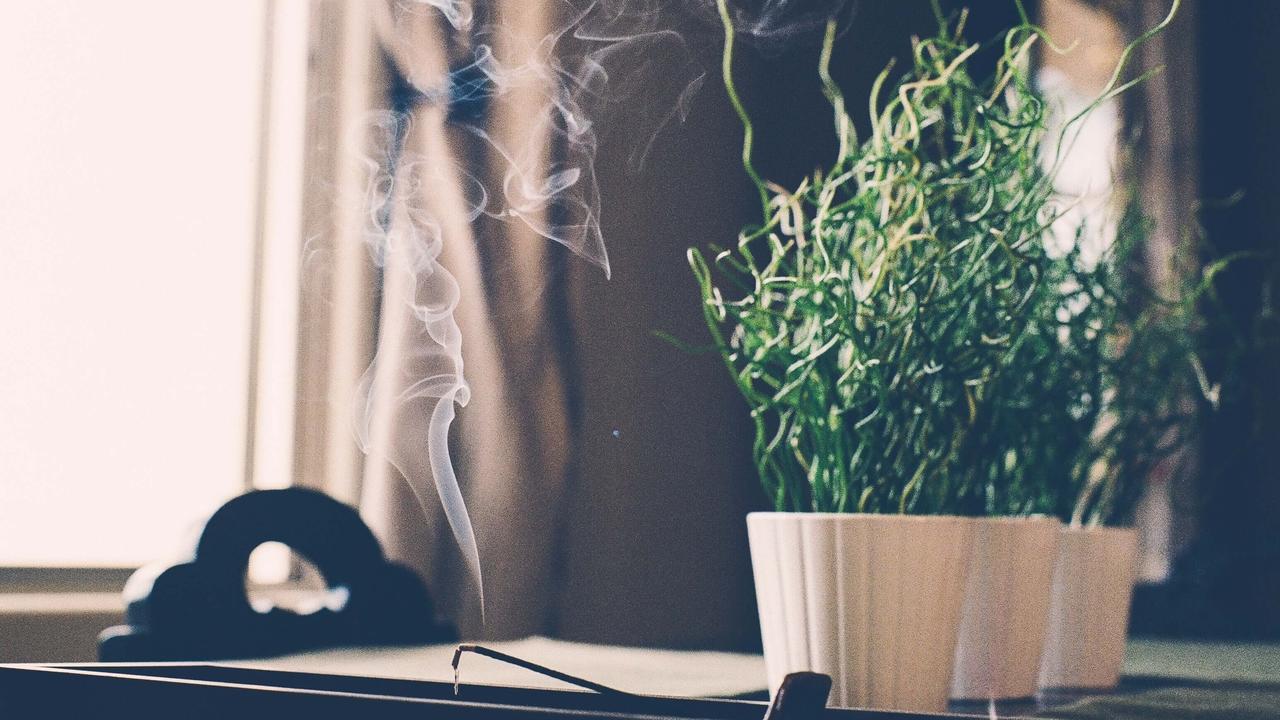
Health tips for burning candles and incense as well as smudging sage or Palo Santo
May 25, 2018Candles have been a part of our rituals and celebrations for more than 5,000 years. Burning incense and "smudging"—ceremonial practices of burning sacred herbs and woods to "cleanse" or bless spaces—have also been performed since ancient times. Given that these practices have existed for millenia, could they pose health risks?
Aside from accidental fires, the process of burning anything always runs the risk of emitting unhealthy fumes or particles. And which gases or particulate matter are emitted into your indoor air depends on what you're burning. To understand health risks posed by burning candles, let's take a closer look at the ingredients used to create candles. They have evolved.
Early civilizations made candles out of animal fat, plants, and insects. Today, candles are often made from petroleum ingredients. And petroleum is the “repeat offender” among the toxic chemicals I encountered during my 8 years of research for my book A to Z of D-Toxing: The Ultimate Guide to Reducing Our Toxic Exposures.
According to a 2001 report prepared for the EPA, one study showed concentrations of toxic chemicals (like lead and formaldehyde) from candle emissions exceeding EPA-recommended thresholds. While the National Candle Association claims that burning various types of candles are safe, below are three key components of candles to understand.
Candles
1. Wax Ingredients
Wax candles are often made from petroleum, vegetables (like from soy or coconut), animals, and/or insects. Beware that some candles may mention just one ingredient, like soy, but it may be blended with other ingredients, like petroleum. Additional ingredients are often added for color, fragrance, stability, or to modify the burning characteristics.
Burning anything indoors will probably pollute your indoor air. But burning petroleum-based ingredients, like paraffin, is more likely to emit toxic fumes, like benzene and toluene. Chronic exposures can contribute to damaging the brain, lung and central nervous system, as well as developmental difficulties, cancer, allergies, and asthma.
Healthier options exist: vegetable-based candles that are non-scented, non-pigmented and free of dyes were found to not emit harmful pollutants.
2. Candle Wicks
Candle wicks are often made of metal, cotton, or a blend of both. Metal candle wicks help keep the wick standing straight when the surrounding wax begins to melt. And sometimes wicks consist of several thinner wicks that are braided together. While the US candle manufacturing industry agreed to discontinue using lead in wicks by 1974, lead is still found in some candle wicks. And they have been shown to sometimes contaminate indoor air with lead in concentrations above EPA-recommended thresholds.
3. Fragrance
When I shop or edit my stuff, "fragrance" is a red flag: "The concern is that most scents can be concocted from any combination of thousands of chemicals that companies can use," as I wrote in A to Z of D-Toxing. Most ingredients are not disclosed, not proven safe, and are made of petrochemicals. Of the relatively few ingredients studied, the test results raise concern.
Tips for Healthier Candles
While it's ideal to avoid burning candles, when the joy it brings outweighs your concerns, then the tips below will help you buy healthier candles.
- Wax: 100% pure beeswax with no artificial colors.
- Wick: Choose 100% cotton.
- Fragrance: Choose fragrance-free (best choice) or 100% pure essential oils.
- Buy candles made in the USA. Even better: Support local businesses and buy from local candlemakers that you know and trust.
- Think twice if pregnant women and children will be exposed. Young life is especially vulnerable to toxic exposures.
Incense
Incense smoke can also be a major contaminant of indoor air quality. Studies found that benzene and particulates can be emitted at concentrations that could pose human health risks.
Studies indicated links may exist between exposure to incense smoke and to several
illnesses, including cancers and contact dermatitis. A few studies indicated possible mutagenic and genotoxic effects, according to a 2001 report prepared for the EPA, titled "Candles and Incense as Potential Sources of Indoor Air Pollution: Market Analysis and Literature Review."
Tips for burning incense
- Avoid as much as possible
- When you can't resist, be sure what you are burning is 100% pure and ventilate your space by turning ventilation on, or opening your windows if outdoor air quality is good
- Avoid burning incense if pregnant women and children would be exposed because young life are at higher risk to toxic exposures
Sources / Additional Sources
🎁 unlock your ULTIMATE HOME DETOX™ starter pack
Download the Ultimate Home Detox™ Starter Pack—your free set of practical, science-backed tools to begin reducing toxic exposures in your everyday life.
- Nontoxic Cleaning Guide
- Forever Chemicals Detox Starter
- EMF Detox Challenge
- Safe Cookware Starter Kit
- Kitchen Detox Checklist
- Fertility / Pregnancy / Children's Detox
Join 349,000+ people who’ve turned to Ruan Living for trusted, practical nontoxic guidance. These resources have helped thousands begin their journey toward a healthier home—and they’re yours, free.
GET YOUR ULTIMATE HOME DETOX™ STARTER PACK NOWWe hate SPAM. We will never sell your information, for any reason.



